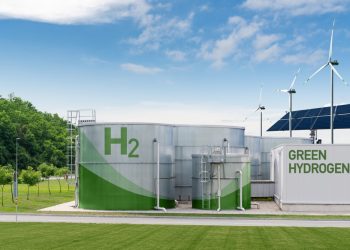
Namibia is in discussions to export green hydrogen to South Africa to support the decarbonization of its car manufacturing industry, as the neighboring country seeks to maintain market share in the carbon-conscious European Union (EU) market.
“The most interesting outcome is a possible export to South Africa to decarbonize their car manufacturing industry as it aims to maintain market share in the carbon-conscious EU market. It truly is a global project,” said James Mnyupe, Head of the Namibia Green Hydrogen Programme.
South Africa’s decarbonization roadmap faces significant challenges, with renewable energy expected to account for only 20% of the country’s power mix by 2030, according to an analysis by Rystad Energy.
Green Hydrogen Namibia spokesperson Jona Musheko highlighted the potential economic benefits for Namibia, including increased export revenue, strengthened regional energy cooperation, infrastructure development, and value addition to local raw materials.
He also noted that Namibia’s participation in the green hydrogen sector could position the country as a key player in Africa’s green energy transition and, eventually, in the global market.
At present, discussions remain in the technical concept development phase, with a pre-feasibility study planned.
“While no specific export volumes or revenue projections have been finalized, engagement is ongoing. For now, the primary focus is on establishing the necessary infrastructure and regulatory framework to enable large-scale hydrogen exports in the future,” Musheko told Namibia Mining and Energy.
South Africa, a major exporter of carbon-intensive products to the EU, faces significant exposure to the Carbon Border Adjustment Mechanism (CBAM) regulations.
“As a result, discussions between Namibia and South Africa have focused on shared infrastructure development, particularly the establishment of Common User Infrastructure,” Musheko said.
One key component under consideration is a hydrogen pipeline from Lüderitz to South Africa, which Musheko said would facilitate hydrogen transport from projects such as Hyphen Hydrogen Energy.
Revenue expectations, export quantities, and taxation frameworks remain premature at this stage, with more clarity expected as the industry develops.
Musheko added that while the green hydrogen sector is still in its early stages, perceptions are shifting as projects like HyIron prepare to commence commercial production of green steel.
“The sector is advancing faster than anticipated, driven by both technological progress and international trade policies such as the EU’s Carbon Border Adjustment Mechanism (CBAM),” he said.







